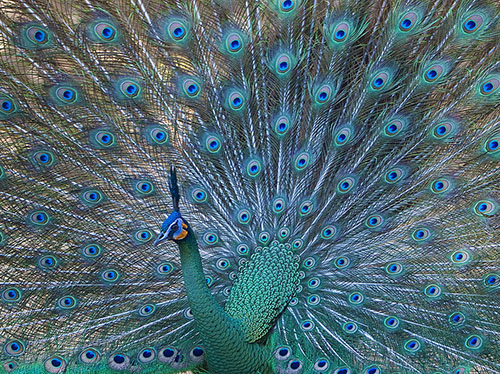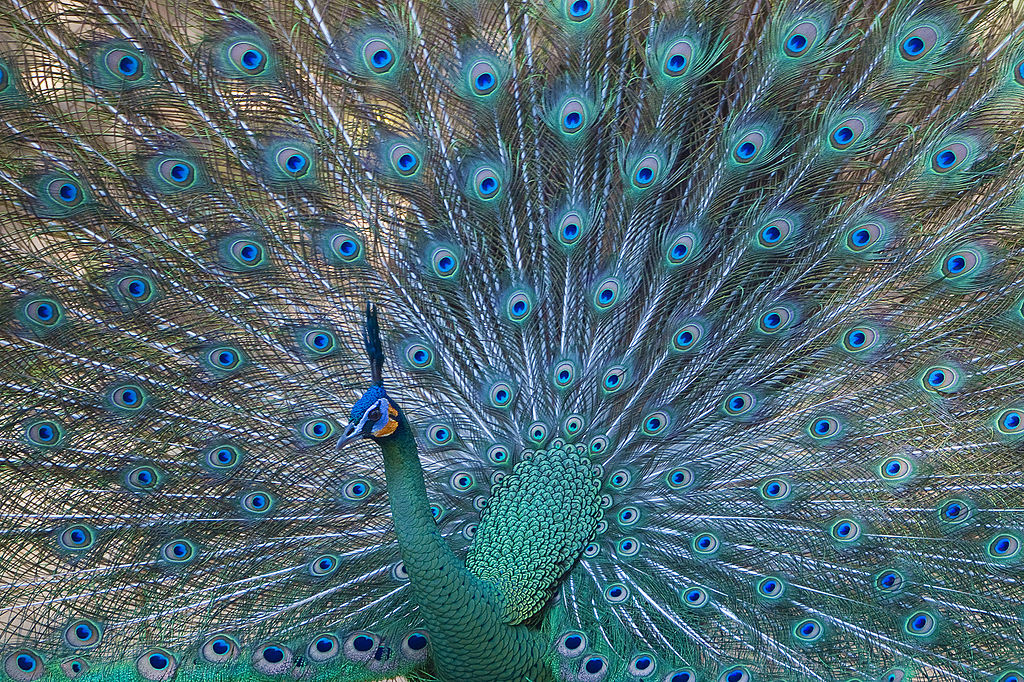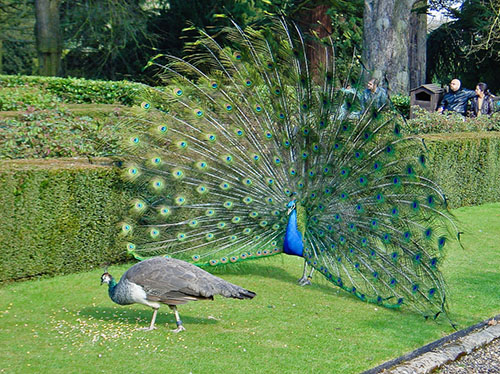Sexual Selection
It takes 200 brilliantly colored tail feathers for the amorous peacock to even begin to impress the ladies. Females prefer the male displaying the greatest number of “eye-spots” on his train. Evolutionarily speaking, one might say that he’s only got eyes for her.




